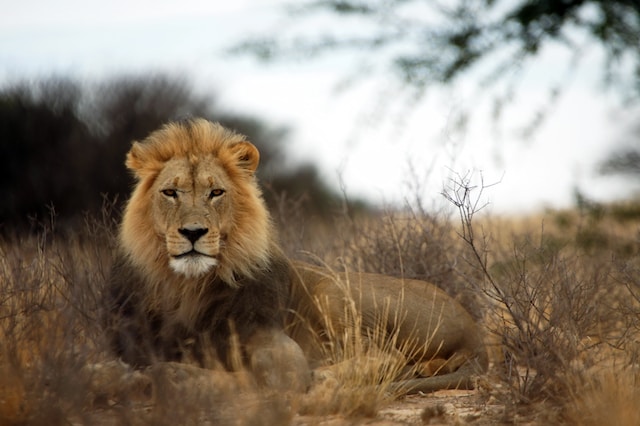The lion, scientifically known as Panthera Leo, is one of the most iconic and revered species in the animal kingdom. Often referred to as the “King of the Jungle,” this magnificent big cat is not only a symbol of strength and courage but also a crucial component of the African savanna ecosystem. In this blog post, we will delve into the world of lions, exploring their fascinating characteristics, social structure, conservation status, and the importance of protecting these regal creatures.
The Characteristics of Lions
Physical Prowess: Lions are formidable predators, known for their muscular build, sharp claws, and powerful jaws. Adult males can weigh between 330 to 550 pounds, while females are generally smaller.
Mane Variability: One of the most distinctive features of male lions is their majestic manes. The colour and size of the mane can vary among individuals and are influenced by genetics and environmental factors.
Sociable Nature: Lions are unique among big cats for their social behaviour. They form family groups called prides, which can consist of several related females, their offspring, and a few adult males.
The Social Structure of Lions
Pride Hierarchy: Within a pride, there is a social hierarchy. Dominant males are responsible for protecting the pride and territory, while females are often the primary hunters.
Cooperative Hunting: Lions are skilled hunters who often employ coordinated strategies when hunting. Lionesses work together to bring down prey, increasing their chances of success.
Territorial Behavior: Lions are territorial animals, and the pride’s territory is fiercely defended against intruding pride or nomadic males.
Conservation Status
Vulnerable Species: Despite their iconic status, lions are listed as a vulnerable species by the International Union for Conservation of Nature (IUCN). Their population has declined significantly due to habitat loss, human-wildlife conflict, and poaching.
Conservation Efforts: Various organizations and initiatives are working to protect lions and their habitats. These efforts include the establishment of protected areas, community-based conservation programs, and anti-poaching measures.
Human-Lion Conflict: Conflict between lions and local communities is a significant challenge. Effective solutions often involve finding ways to mitigate livestock losses and promote coexistence.
The Importance of Lion Conservation
Ecological Role: Lions play a vital role in maintaining the balance of their ecosystems. Their presence helps regulate herbivore populations, preventing overgrazing and habitat degradation.
Economic Value: Lions are a significant driver of ecotourism, attracting visitors from around the world. This tourism contributes to local economies and provides incentives for lion conservation.

Cultural Significance: Lions hold deep cultural and symbolic importance in many African societies. Their survival is intertwined with cultural heritage and identity.
Conclusion
The lion’s reign as the “King of the Jungle” is not just a symbol; it’s a testament to its unique role in the natural world. These majestic creatures are not only magnificent predators but also critical components of their ecosystems. However, they face numerous threats to their survival. By supporting conservation efforts, raising awareness, and promoting coexistence between lions and local communities, we can ensure that future generations will continue to be enchanted by the regal presence of the African lion on the savanna.
